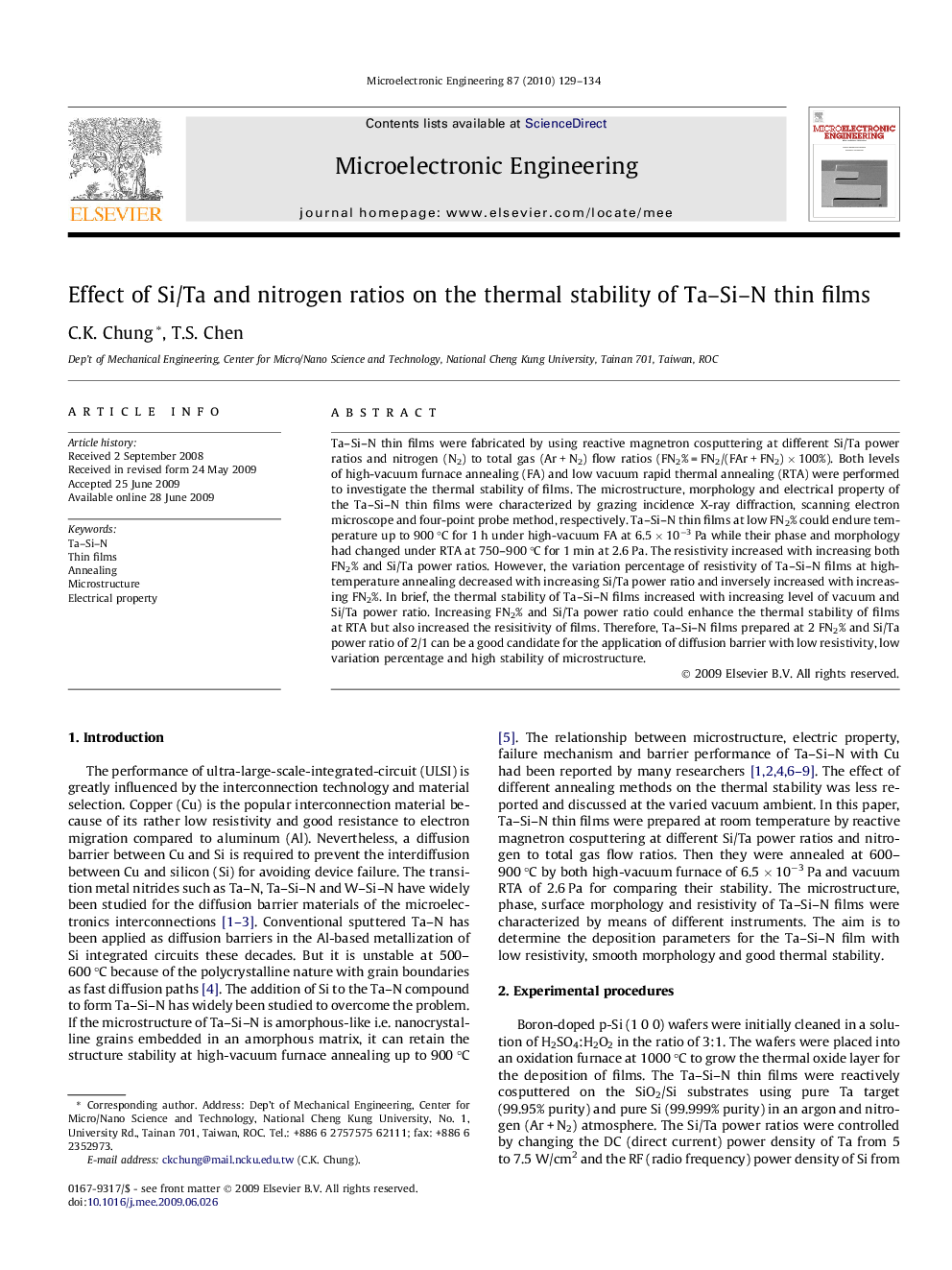| Article ID | Journal | Published Year | Pages | File Type |
|---|---|---|---|---|
| 541433 | Microelectronic Engineering | 2010 | 6 Pages |
Ta–Si–N thin films were fabricated by using reactive magnetron cosputtering at different Si/Ta power ratios and nitrogen (N2) to total gas (Ar + N2) flow ratios (FN2% = FN2/(FAr + FN2) × 100%). Both levels of high-vacuum furnace annealing (FA) and low vacuum rapid thermal annealing (RTA) were performed to investigate the thermal stability of films. The microstructure, morphology and electrical property of the Ta–Si–N thin films were characterized by grazing incidence X-ray diffraction, scanning electron microscope and four-point probe method, respectively. Ta–Si–N thin films at low FN2% could endure temperature up to 900 °C for 1 h under high-vacuum FA at 6.5 × 10−3 Pa while their phase and morphology had changed under RTA at 750–900 °C for 1 min at 2.6 Pa. The resistivity increased with increasing both FN2% and Si/Ta power ratios. However, the variation percentage of resistivity of Ta–Si–N films at high-temperature annealing decreased with increasing Si/Ta power ratio and inversely increased with increasing FN2%. In brief, the thermal stability of Ta–Si–N films increased with increasing level of vacuum and Si/Ta power ratio. Increasing FN2% and Si/Ta power ratio could enhance the thermal stability of films at RTA but also increased the resisitivity of films. Therefore, Ta–Si–N films prepared at 2 FN2% and Si/Ta power ratio of 2/1 can be a good candidate for the application of diffusion barrier with low resistivity, low variation percentage and high stability of microstructure.
